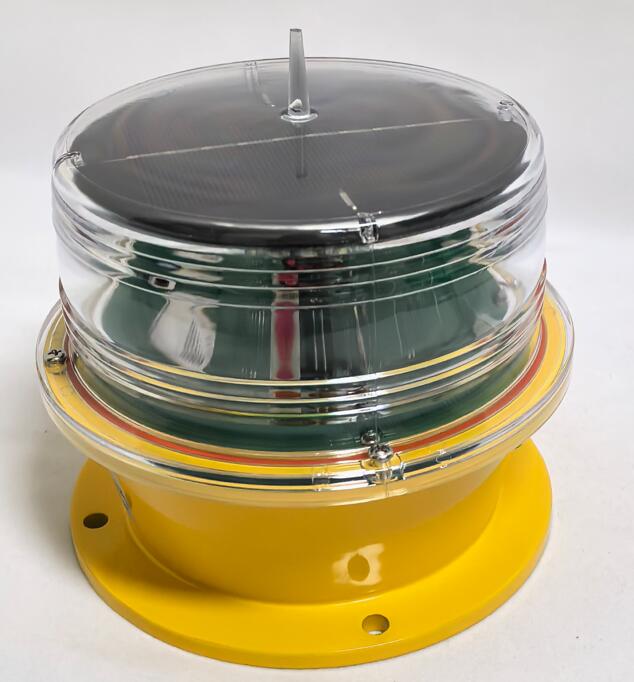Solar Powered Obstruction Lights: Revolutionizing Aviation Safety with Sustainable Technology
As the world shifts toward renewable energy solutions, solar powered obstruction lights are emerging as a game-changing innovation in aviation safety. These self-sufficient lighting systems provide reliable visibility for tall structures while eliminating dependence on grid electricity. Particularly valuable in remote locations and environmentally sensitive areas, solar powered obstruction lights combine cutting-edge solar technology with advanced LED illumination to enhance safety while reducing carbon footprints. This article explores their working principles, applications, and the future of sustainable aviation lighting.
Why Solar Powered Obstruction Lights Matter
Traditional obstruction lights rely on grid power, which can be unreliable in remote regions or during power outages. Solar powered obstruction lights solve this challenge through:
Energy Independence: Operate autonomously without electrical infrastructure
Environmental Sustainability: Zero carbon emissions during operation

Cost Efficiency: Eliminate long-term electricity costs
Easy Installation: No trenching or cabling required
Low Maintenance: Designed for years of reliable service
How Solar Powered Obstruction Lights Work
A complete solar powered obstruction light system consists of four key components:
| solar powered obstruction lights |
High-Efficiency Solar Panels
Monocrystalline silicon technology (20-24% efficiency)
Weather-resistant tempered glass coating
Automatic sun-tracking in advanced models
Intelligent Charge Controller
Maximum Power Point Tracking (MPPT) technology
Prevents overcharging and deep discharge
Automatic voltage regulation
Long-Life Battery Bank
Lithium-ion or deep-cycle gel batteries
5-7 day backup capacity
Wide temperature tolerance (-30°C to 60°C)
High-Performance LED Light Head
FAA/ICAO compliant red or white LEDs
50,000+ hour lifespan
Adaptive brightness control
Key Applications of Solar Powered Obstruction Lights
1. Wind Energy Farms
Ideal for marking turbine arrays in remote locations
Synchronized flashing patterns across multiple units
Radar-activated versions reduce light pollution
2. Telecommunications Towers
Reliable operation in mountainous regions
Minimal maintenance for hard-to-access sites
Integrated monitoring for fault detection
3. Offshore Structures
Marine-grade corrosion resistance
Specialized mounts for oil rigs and navigation aids
Enhanced visibility in foggy conditions
4. Construction Sites
Temporary marking for cranes and tall equipment
Rapid deployment without electrical work
Theft-resistant designs
Regulatory Compliance and Standards
Solar powered obstruction lights must meet stringent aviation safety requirements:
FAA AC 70/7460-1L (U.S. standards)
ICAO Annex 14 (international requirements)
EN 61820 (European norms)
Intensity Ratings: L-810, L-864, or L-856 classifications
Flash Characteristics: 20-60 flashes per minute
Technological Advancements
1. Smart Lighting Systems
IoT-enabled remote monitoring
Real-time performance analytics
Predictive maintenance alerts
2. Advanced Power Management
Hybrid solar/wind charging options
Ultra-low power consumption (<5W)
Winter optimization algorithms
3. Improved Durability
IK10 vandal-resistant ratings
IP68 waterproof enclosures
UV-stabilized polycarbonate housings
4. Innovative Designs
Low-profile architectural models
Camouflage color options
Minimalist urban installations
Overcoming Common Challenges
1. Extreme Weather Performance
Arctic-grade batteries for cold climates
Hurricane-resistant mounting systems
Dust-proof ventilation for desert areas
2. Wildlife Considerations
Bird-friendly flash patterns
Ultraviolet spectrum options
Reduced attraction to insects
3. Community Acceptance
Directional light focusing
Adjustable intensity settings
Dark-sky compliant designs
The Future of Solar Powered Obstruction Lights
Emerging trends include:
AI-Optimized Operation: Machine learning for energy efficiency
Self-Cleaning Surfaces: Nanotechnology coatings
Integrated Air Traffic Sensors: Automatic activation
Modular Systems: Scalable power configurations
Blockchain Monitoring: Tamper-proof maintenance records
Solar powered obstruction lights represent the perfect synergy between aviation safety and sustainable technology. By harnessing solar energy, these systems provide reliable, regulation-compliant marking for structures worldwide while reducing environmental impact. As renewable energy technology continues advancing, solar powered obstruction lights will become even more efficient, intelligent, and integrated into smart infrastructure networks.
For aviation authorities, construction firms, and renewable energy developers, adopting solar powered obstruction lights isn't just an environmentally responsible choice—it's a practical solution that combines operational reliability with long-term cost savings. The future of obstruction lighting is clearly solar-powered, offering brighter safety outcomes through cleaner energy solutions.
